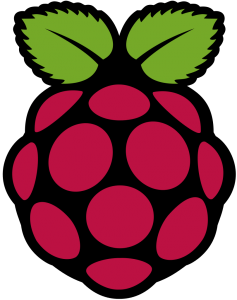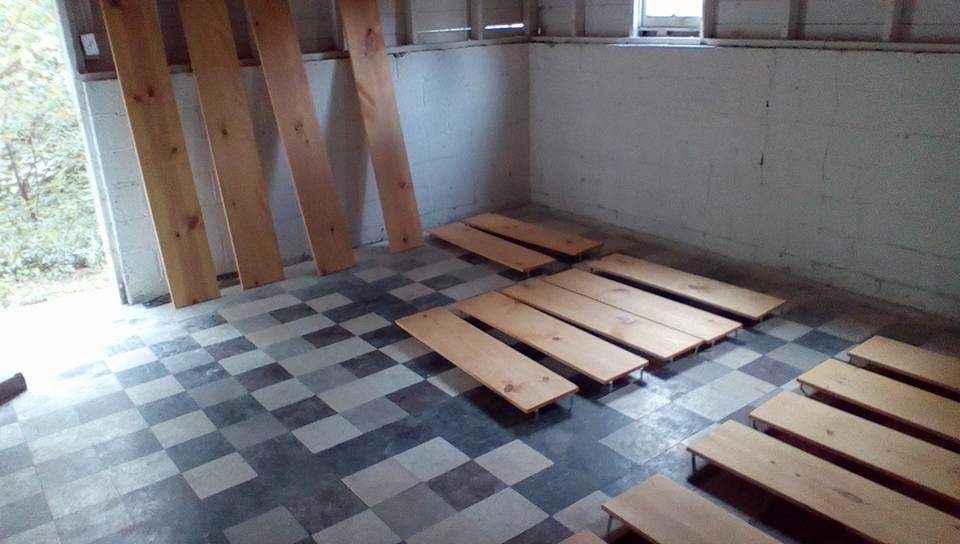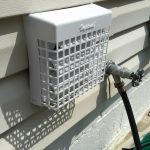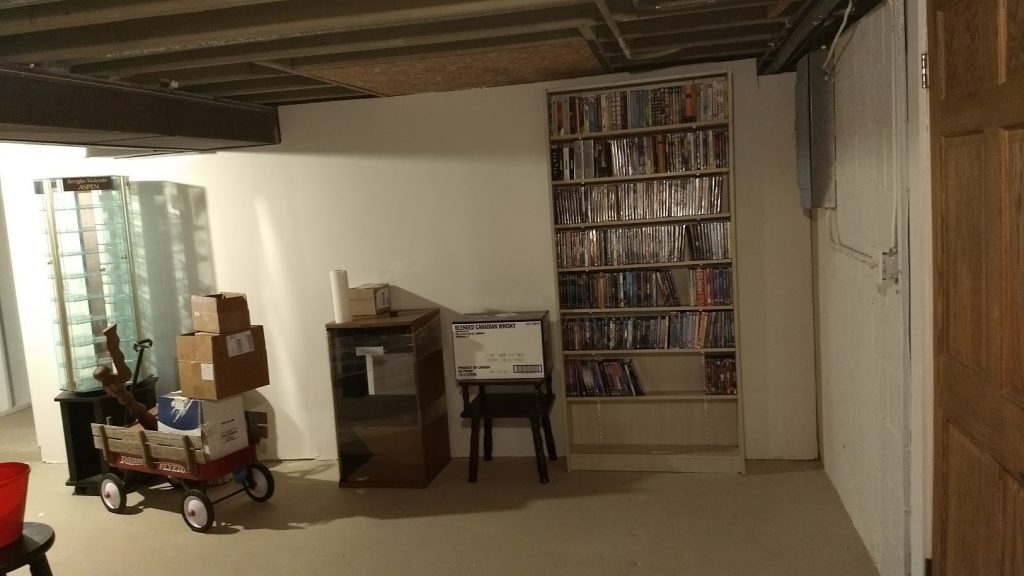 I’ve been at a bit of a loss for a while on what to do with my RaspberryPi B+. I have a B+ and two RaspberryPi B 2s. The B2s are so much more useful and powerful than the B+ that the poor B+ has kind of been tossed to the wayside. I was using it as a server for ZNC, an IRC Bouncer. When I set up my milti-monitor set up, I tried running X-Chat on the B+ with ZNC but the lag was too much. I’m not sure if the load was from XChat or from ZNC or from Synergy, but the short of it is, the B+ wasn’t useful to my array of machines and needed a headless activity assigned to it.
I’ve been at a bit of a loss for a while on what to do with my RaspberryPi B+. I have a B+ and two RaspberryPi B 2s. The B2s are so much more useful and powerful than the B+ that the poor B+ has kind of been tossed to the wayside. I was using it as a server for ZNC, an IRC Bouncer. When I set up my milti-monitor set up, I tried running X-Chat on the B+ with ZNC but the lag was too much. I’m not sure if the load was from XChat or from ZNC or from Synergy, but the short of it is, the B+ wasn’t useful to my array of machines and needed a headless activity assigned to it.
Sure, I could let it continue to run ZNC, but dedicating two Pis to IRC seems like overkill, so I moved ZNC to the B2 that I run Xchat on and freed the B+ for whatever I wanted.
Pi-Hole for DNS
I started out by setting up Pi-Hole. It has a fancy name and is simple to install, but at the core, Pi-Hole is just a DNS server that filters sites based on some predefined public lists. Specifically, it filters ads. There is a whole debate to be made on the pluses and minuses of ad filtering, but it is what it is and I’m not getting into that debate here. Pi-Hole has a white list anyway, for “good ads”. Mostly, it’s a way to filter on mobile, where it’s not easy to install an ad blocker.
Installing Pi-Hole is as simple as entering the following into the command line over SSH or even on the RaspberryPi itself:
sudo curl -L install.pi-hole.net | bash
Though you will also need to set up the Pi with a static IP and then later point your computer’s DNS records to the IP of the Pi.
On a bit of a side note, DNS is Domain Name Server. The easy analogy is that it is a phone book to the Internet. Servers where websites live all have IP addresses assigned in various ways, but in order to keep things simple for humans, these servers get friendly names, like Microsoft.com or Facebook.com. The DNS is where your computer looks up “Facebook.com” to find out what IP address it’s located at. In this case, ads come from specific servers and providers, often not related to the core domain. So Website.com may serve ads from advertiser.org. With Pi-Hole, your computer looks up both domains when you connect to Website.com, but the RaspberryPi Pi-Hole simply replies “I don’t know where Advertiser.org is located”. You computer then fetches what it can from Website.com, but displays nothing from Advertiser.org.
ISC-DHCP for DHCP
Sort of tangentially related, I recently changed ISPs. I went from a 3Mbps DSL to 50Mbps Cable modem. I keep my home network crazy organized since there are a ton of devices on it. For every person in my house there are something like 4 devices, and this doesn’t count game consoles, media devices, or my own little IOT devices. On the old modem, I set up MAC assignments on the router so that wireless devices like my phone, where I can’t assign a static IP, get assigned a specific IP. I went through and set all of this up on the new modem, but none of the assignments seem to have taken. I’m not entirely sure why, I have theories, but I’ve instead decided to use this as an excuse to re-purpose my B+ and to learn more about managing a DHCP server.
So what is DHCP. DHCP stands for Dynamic Host control Protocol. I mentioned earlier that DNS was the way to connect the firstly domain name to an unfriendly IP address. DHCP assigns those IP addresses. Some static devices like routers or desktop computers that never go anywhere can pick and self assign an IP but things like phone that move between networks need to be given a temporary IP address as they come and go. DHCP handles this. Every device on a network has a unique IP address, though small networks like the one in your home, all tend to share IP ranges since to the outside world they appear to be one node/thing/device. DHCP can be used to give out reserved “static like” IPs to these roaming devices though based on the device’s MAC Address. A MAC Address is a device unique identifier. For example, when the DHCP server or router sees a specific MAC, it can say “I know you, you get IP 192.168.1.50”. When a strange device shows up, it will simply say “Here, this time you are 192.168.1.103, which is the next free IP in my pool of IPs”.
The set up for DHCP is a bit more involved than for Pi-Hole. There is a detailed guide below but I’ll run through the cliff notes version. There is a lot more that can be done but I’m not going to get super detailed here. This is essentially for a simple home network with one subnet. The first steps are to set up and configure the server, it will likely error out in the middle, just keep going with it.
sudo apt-get install isc-dhcp-server
sudo nano /etc/dhcp/dhcpd.conf
This is where it gets a little trickier. You will need to edit the options in the config file.
option domain-name “your_domain”
option domain-name-servers
Your Domain can be more or less anything really, it’s often just “Workgroup” by default in Windows. It should be all one word though. Domain Name Servers are specific however. If you are using Pi-Hole, set the IP of the Pi running Pi-Hole into this list. You can add additional DNS servers with a comma between each one, some suggestions, 8.8.8.8, and 8.8.4.4 are Google’s DNS servers. OpenDNS uses 208.67.222.222 and 208.67.20.220. It’s a good idea to have more than one in case there are issues.
The only other thing you NEED to set is the ip information and range found under
subnet 10.0.0.0 netmask 255.255.255.0
{ range 10.0.0.1 10.0.0.200;
option routers 10.0.0.254;
}
You will need to replace the IP information in this block. the subnet should be the first three octets of your network followed by a .0. The most common ones in a home network are 192.168.1.0, 192.168.0.0, and 10.110.1.0. The range is the range of IPs to give out. If you are going to use static IPs, i would recommend setting this range beyond your static IP ranges. For example, I have a spreadsheet blocking off reservations through 192.168.1.100, I added some extra for my router to serve as a backup DHCP server and set the range on the RaspberryPi as 192.168.1.175 192.168.1.250. This means, when a device connects, it will be assigned an IP starting at the next available at .175.
The final option is routers, chances are really good that you have only one, and chances are the IP ends in .1 or .254. This will assign the router IP so that devices know how to get out to the Internet.
If you want to ensure your Pi DHCP server is assigning IPs over anything else on the network (ie your router) you will need to find the line that reads “If this DHCP is the official DHCP server…” and uncomment the line “authoritative”.
Finally at the bottom, there are blocks to assign static IPs using a format like:
host MACHINENAME
{
hardware ethernet MACADDRESS;
fixed-address FIXED_IP_YOU_WANT_TO_ASSIGN;
}
An easy way, if you are running Windows, to find out MAC addresses of devices is to run Netscan. This will give you a list of everything connected to your home network. There are a few ways to decipher which IP/MAC is which. Some will have the MAC printed on them, often near the network port. In the case of phones or tablets, it’s simplest to simply disable the WiFi or turn them of and rescan to see which disappears. Some may show up with names you may recognize. You can also sometimes search for the first 3 sets of numbers (IE 45:3b:a3) which is manufacturer specific to decipher that “That’s a Sony device, the only Sony thing I own is the Blu Ray player”.
Setting reserve assignments is entirely optional. The main purpose is to better organize your home network. If you only have a half dozen devices, it really probably isn’t necessary at all.
Once you are done editing, CTRL+O (for Output) to save the file, and CTRL+X to close it. If you get an error that you can’t write the file then you forgot to do a”sudo” and you will need to do it all over again.
Wrap Up
Things are not quite finished yet. You will need to start the DHCP server, since it error-ed out earlier. You can do this using the following commands:
service isc-dhcpd-server stop
service isc-dhcpd-server start
HOWEVER, I still got an error when I did this. A little searching and I found a similar issue and fix which I used.
sudo pico /etc/default/ifplugd
Then change this:
INTERFACES=”auto”
HOTPLUG_INTERFACES=”all”
ARGS=”-q -f -u0 -d10 -w -I”
SUSPEND_ACTION=”stop”
To match this:
INTERFACES=”eth0″
HOTPLUG_INTERFACES=”eth0″
ARGS=”-q -f -u0 -d10 -w -I”
SUSPEND_ACTION=”stop”
then reboot and after the reboot start the server with:
sudo reboot
service isc-dhcpd-server start
Everything should be working now. You can run Netscan later and see if IPs are being assigned into the range you chose. This may not happen immediately since IPs have a lease time and devices may hold on to the old IP for a bit.
Reference:
Pi-Hole
Configuring the Raspberry Pi as a DHCP Server under Raspbian Wheezy
How To : Use The Raspberry Pi As A Wireless Access Point/Router Part 3…B!
Josh Miller aka “Ramen Junkie”. I write about my various hobbies here. Mostly coding, photography, and music. Sometimes I just write about life in general. I also post sometimes about toy collecting and video games at Lameazoid.com.









A Myriad of Little Projects
I’ve neglected posting much lately, not so much because I haven’t been doing anything but more because I’ve been busy and not really with anything deserving of it’s own post. I hope to remedy this a bit next year but for now I just wanted to run through some recent projects I’ve been working on.
The All New All the Same Lameazoid.com
Probably the biggest monopolizer of my time has been my other blog at Lameazoid.com. There isn’t a lot there now, but my intention is to do a relaunch of sorts in 2017. I’ve managed to keep up with my current regular posting, which amounts to roughly two posts per week, one Weekly Haul post and a recap of Agents of SHIELD. I want to do much more next year. I even made up a spreadsheet to plan everything for the year.
I have regular content set up for every day of the week. The idea right now, is to build up a long runway. I have the time now to crank out reviews and take photos as needed. If all goes to plan, I will have content scheduled out through roughly May in every category. The idea is that this content, while good is a buffer that can be shuffled as needed for NEW content to be inserted on demand.
I’ve also taken steps to try to line up content with related new content. For example, Logan, comes out on 3/3. So in the weeks before, for the Marvel Movie Review of those weeks, I’ll do Wolverine and The Wolverine (yeah those names are similar and dumb). I could also pair this with some Wolverine related Marvel Legends reviews, or maybe some other Hugh Jackman reviews.
I’ve been up to a few new tech related projects lately as well.
Mail-In-A-Box
I’ll probably do a post just on Mail-in-a-Box and my set up experience. Mail-In-A-Box is a simple install Mailserver for hosting your own email. I’ve spun up a second VPS and attached this domain to it, since I previously didn’t have any email for this domain. It was a little tricky but I worked things out. The hardest bit is that Mail-In-A-Box wants to handle the DNS and core domain, but I’m hosting these things on two separate servers.
I’ve gotten a little extra cozy with DNS lately, but I also had an issue come up because Mail-In-A-Box seemed to be pushing the SSL https domain for BloggingIntensifies.
Encryption Everywhere
You might notice, I’ve enabled HTTPS on this blog. This came out of necessity since after setting up Mail-In-A-Box, Firefox kept forcing the site to the HTTPS version, which nothing was set up for so it didn’t load. This is a change I’ve been meaning to make anyway since the launch of LetsEncrypt! Google is supposed to start penalizing non HTTPS sites at some point plus it’s good practice anyway. I set up HTTPS for this blog, Lameazoid.com and Joshmiller.net. Once I am confident in things I’ll set it up for TreasuredTidbits,.com and TheZippyZebra.com as well.
I had some issues with Joshmiller.net though because of the way Cloudflare works.
Cloudflare Integration
I also recently added Cloudflare to all of my sites. Cloudflare is essentially a DNS provider but it also lets you mask and reroute traffic to help protect your server. I had to pull BI off of it though to get Mail-In-A-Box to work and apparently Lameazoid.com wasn’t set up for rerouting. I ended up having trouble with Joshmiller.net when I tried to enable SSL encryption. Basically, as near as I can tell, the set up was looking at the Cloudflare IP and not the server IP, so things weren’t meshing or hooking up properly. Everything corrected itself once I removed the Cloudflare rerouting. I still need to play with this a bit before I set things up on my wife’s two blogs.
Part of why I experiment with my blogs vs hers is that I get way less traffic and I don’t like to irritate her.
Cloud At Cost VPS
I did a post on Cloud At Cost, but I wanted to mention it again as a recent project. I have two VPSs from them, plus some. I’m still having issues with the Windows VPS but the Linux one has been running pretty well since I got it up and running.
PLEX Server
My Synology NAS has the ability to act as a PLEX server. I recently cleaned up a bunch of space on the NAS by throwing some spare drives into an older machine and creating a “Deep Archive” for things that I never need to access that take up a lot of space (read: My 500GB of raw video from ten years of my bi annual DVD making projects). I also shoved some things like old ISOs and Game Install files onto the Deep Archive. I then proceeded to start filling this new space with rips of my DVD collection. I’m still working on the long and arduous ripping process as time allows but the idea is to run everything through PLEX to the two Firesticks I’ve set up on each TV. This means my family doesn’t have to drag out a huge binder of DVDs to find a movie and it means I can stop worrying about discs getting scratched up and ruined.
It also gives me a nice way to watch all of the home video footage I’ve recorded over the past 10+ years. This whole project met a bit of a roadblock when I found that I need to pre transcode all of the video in PLEX before it becomes watchable. The NAS isn’t powerful enough to transcode it in real time.
Josh Miller aka “Ramen Junkie”. I write about my various hobbies here. Mostly coding, photography, and music. Sometimes I just write about life in general. I also post sometimes about toy collecting and video games at Lameazoid.com.